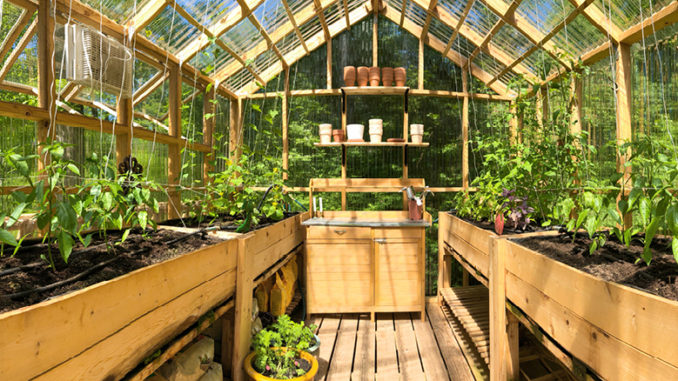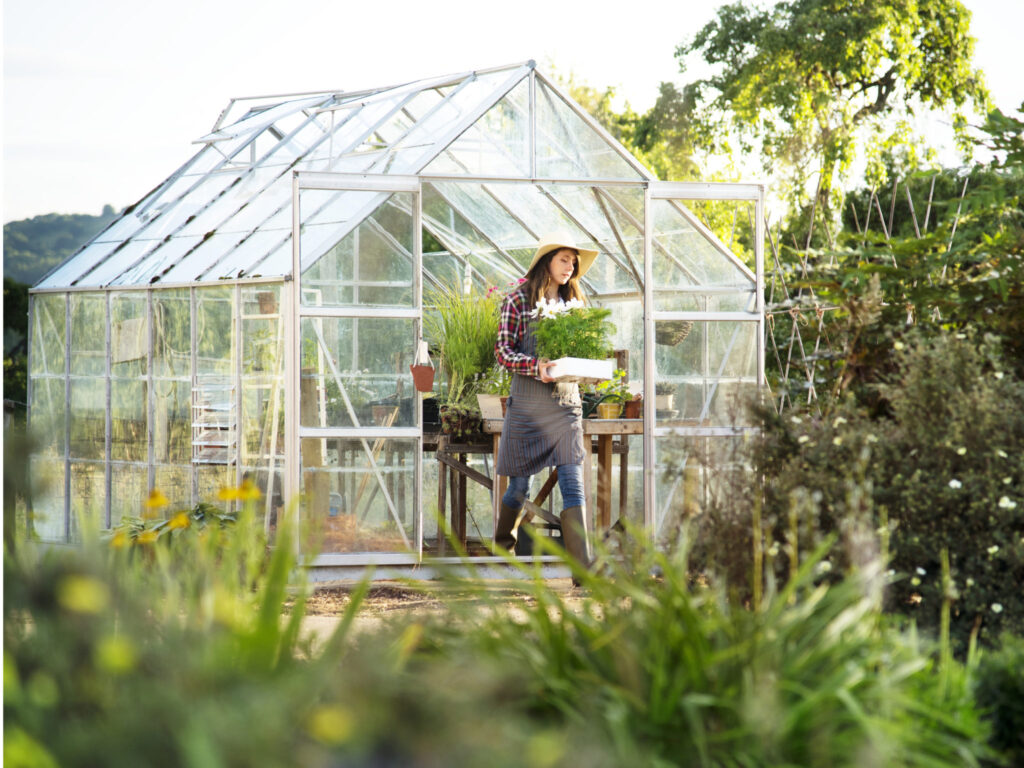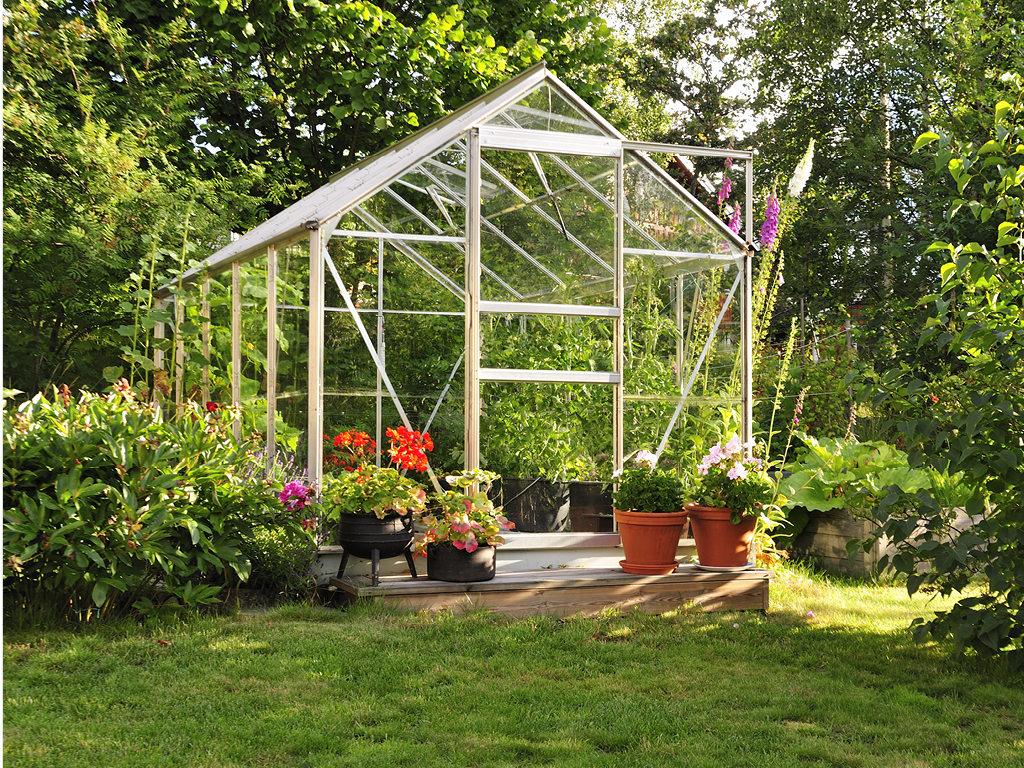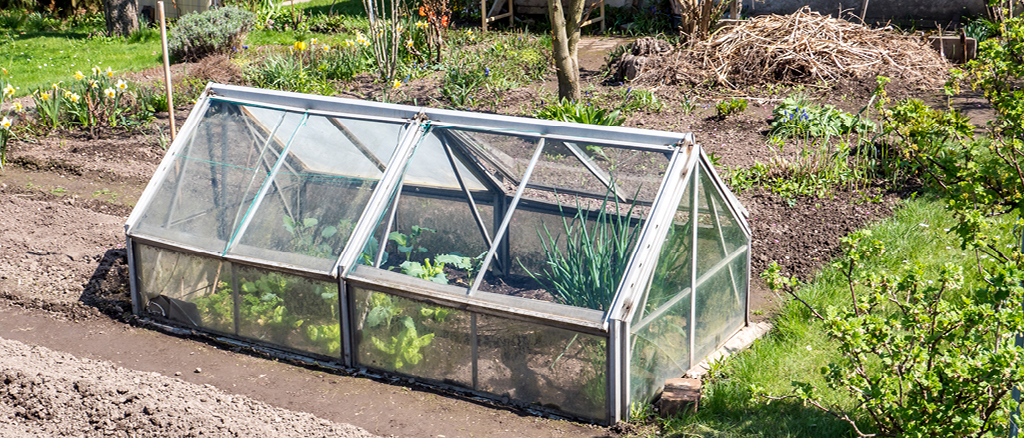
Why ?
Above all, a greenhouse allows you to control the growing conditions of plants. We can anticipate sowing there but also extend vegetable crops in winter to obtain early vegetables. Cold, rare or exotic plants can also be wintered there, which will thus be protected from bad weather and cold.
What greenhouses?
The choice of greenhouse will be made according to the needs, the budget but also the space you have. There are a multitude of types of greenhouses.
- The greenhouse under frame or the tunnel greenhouse: these are greenhouses that will be mainly used for forcing vegetable plants. Early vegetables can be grown there by sowing suitable varieties at the end of summer, then transplanting and leaving until fine weather. Be wary of frost if the temperature inside the greenhouse is greater than the temperature outside! You can also grow your tomatoes there, which will benefit from optimal heat and will be protected from humidity and therefore from mildew.
- The cold greenhouse without “hard” heating will store cold plants during winter, above ground or sheltered from bad weather, extreme cold and wind. This greenhouse will be reserved for plants which need a certain winter freshness and which can wait there until the warm weather returns.
- The temperate greenhouse, heated from 10 to 18 ° C will be able to accommodate spring seedlings and cuttings and will allow the wintering of fragile, exotic or so-called orangery plants.
- The tropical greenhouse heated between 18 and 26 ° C. The heat will be constant there. It will be intended to accommodate rare plants such as orchids, bromeliads, bananas, cacti …

What size ?
The size will obviously depend on the space available to install it, knowing that it must be away from trees and on very flat ground. It is necessary to count at least 6m² in order to leave a free space for movement and, possibly, to install very practical trays and shelves.
What ?
Again, it is the needs and the cost that will decide the materials of the greenhouse. There are different structures:
- The wooden greenhouse is welcoming and charming. Wood has insulating qualities but will require regular maintenance. Choose autoclaved wood or cedar which has the advantage of being rot-proof. The greenhouse must be isolated from the ground by a concrete slab. Its cost will be the highest.
- The metal greenhouse provides the maximum amount of light because the frame will be thin. It is strong but susceptible to rust.
- The aluminum greenhouse is light, easy to maintain and very resistant to wind. Long life but be sure to insulate the joints.
- The PVC greenhouse will be cheaper but reserved for small structures. PVC is a strong insulator and requires little maintenance.

In addition to the structure, the choice of material for the walls will be decisive. Several choices are possible:
- Plastic film: plastic is inexpensive, ideal for early sowing but not suitable for wintering. The plastic film greenhouse can be moved easily.
- Horticultural glass is a good vector of light. Easy to maintain, strong, it lets through 90% of sunlight and filters UV rays. It does not deform. However, you need a solid structure, well anchored in the ground.
- Honeycomb polycarbonate is the lightest and most insulating material. Advances in the field have made it possible to offer polycarbonate which does not become cloudy over time and which is resistant to hail.
The door should be large enough to accommodate a wheelbarrow or large pots. As for ventilation, it is essential so it should not be neglected. To ensure good air circulation, ventilation must be provided at the top by means of automatic openings and another at the bottom by a system of blinds.

Options can complete the equipment: a sun curtain, shelves and shelves to display the plants at different heights, a more or less sophisticated automatic watering system, and a greenhouse heater if you have decided to store them. fragile plants during winter. There are petroleum or electric ones, to be chosen according to the size of the greenhouse.
Where ?
Some rules to follow when deciding on the right location for the greenhouse:
- For the well-being of the plants, we will choose a sunny place in winter. Thus, the longest side surface must face south, even if it means veiling it in summer. Likewise, to avoid mold, avoid places that are too humid.
- We also opt for a location sheltered from the winds and perpendicular to the prevailing wind. The front door should be away from that prevailing wind. This will prevent heat loss.
- The greenhouse should be placed in an area clear of any tall vegetation which, first of all, would remove light, and then present a potential risk of falling branches or leaves.
- Choose a flat, horizontal, firm ground free from all weeds.

How?
The important thing when setting up a greenhouse is the anchoring to the ground. You have two options:
- The greenhouse floor may be bare, but in this case, the base will be essential to stiffen and stabilize the whole.
- The greenhouse floor can be firm, brick, concrete, concrete blocks or impregnated wood. The base will not be essential. Provide a slight inclination (+ or – 0.5 cm / m) for better flow of the gutters.
Trick
Greenhouses attached to the house are a good solution because they take advantage of the heat released in winter. Heating may be optional.
